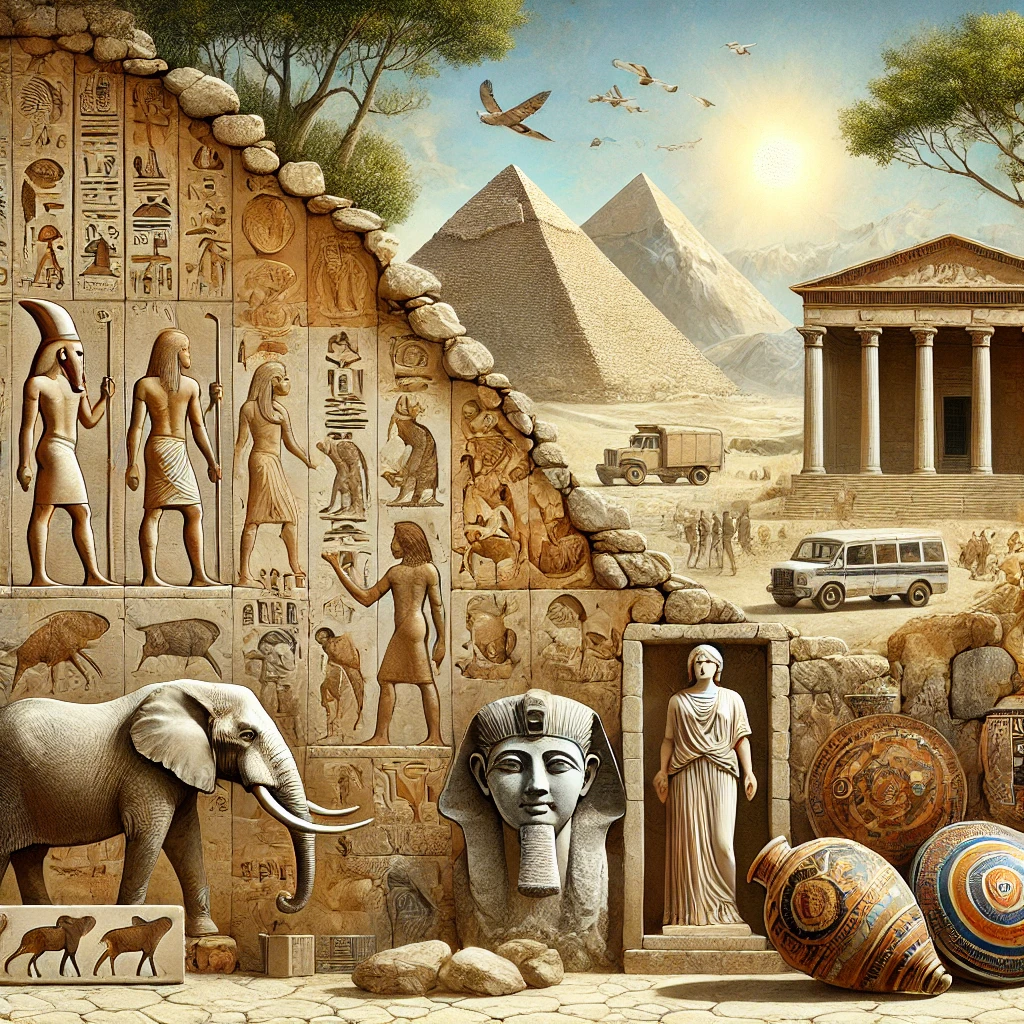Ancient art serves as a window into the past, offering a glimpse of the beliefs, cultures, and innovations of civilizations long gone. Through these timeless creations, we can understand how early societies perceived their world, told stories, and expressed identity. Ancient artz, a term encompassing various artistic endeavors of antiquity, plays a pivotal role in understanding human history, shaping modern art, and influencing contemporary culture. This article will explore the depth and breadth of ancient art, its importance, its real-world applications, challenges surrounding its study, and its enduring relevance.
Detailed Explanation of Ancient Artz
What is Ancient Artz?
Ancient artz refers to the creative expressions produced by early civilizations from prehistoric times to the classical era. This includes cave paintings, sculptures, architecture, pottery, and textiles. From the cave drawings in Lascaux, France, to the monumental pyramids of Giza, ancient art reflects the social, religious, and political life of various cultures.
Artistic forms varied across regions: Mesopotamian ziggurats symbolized power, while Greek sculptures emphasized human form and beauty. Each civilization used different materials and techniques to create enduring works that were as functional as they were symbolic.
Types of Ancient Artz
- Prehistoric Art: One of the oldest forms of human creativity, prehistoric art includes cave paintings, stone carvings, and early pottery. These works, like the famous Venus figurines, are essential for understanding early human life, beliefs, and survival tactics.
- Egyptian Art: Known for its grandeur and symbolism, Egyptian art is steeped in religious significance. The Sphinx and pyramids are prime examples of art as both a monumental and spiritual endeavor.
- Greek and Roman Art: Classical art focused on humanism, with Greek statues such as Discobolus epitomizing idealized human beauty and balance. Roman mosaics, frescoes, and architecture showcase their engineering prowess and focus on realistic depictions of society.
- Asian Art: From the Buddhist sculptures of India to the intricate Chinese pottery of the Han Dynasty, Asian ancient art reflects spirituality and philosophy deeply intertwined with everyday life.
- Mesoamerican Art: Civilizations like the Maya and Aztec produced significant architectural achievements, including pyramids and large stone carvings that symbolized power and religious beliefs.
Importance and Benefits of Studying Ancient Artz
Cultural Significance
Ancient art is not merely decorative; it holds deep cultural meaning, reflecting the values, struggles, and aspirations of civilizations. For example, Egyptian hieroglyphics were not just an art form but a critical method of communication and religious expression.
Understanding Historical Context
By studying ancient art, historians and archaeologists gain invaluable insights into early societies. The clothing, tools, and rituals depicted in art provide clues to the day-to-day life and broader socio-political structures of ancient cultures.
Influence on Modern Art
Many modern art forms draw inspiration from ancient techniques and styles. From the Renaissance, which revived classical Greek and Roman art, to contemporary sculpture, ancient artz remains a rich source of inspiration. Artists continue to explore themes of human experience, beauty, and the divine, all deeply rooted in ancient practices.
Preserving Human Heritage
Ancient artz preserves the heritage and achievements of humanity, allowing us to connect with our ancestors. Artifacts and structures are often the only remaining evidence of long-lost civilizations, preserving their legacy for future generations.
Applications and Use Cases
Archaeological Research
Art is a vital tool in archaeology. From cave paintings to temple carvings, artifacts help researchers reconstruct ancient societies, their practices, and their environments. For example, the discovery of the Rosetta Stone enabled scholars to decipher Egyptian hieroglyphs, vastly improving our understanding of ancient Egypt.
Museum Curation
Ancient artz is a cornerstone of museum collections worldwide. Institutions like the British Museum and Louvre house artifacts that draw millions of visitors annually. These collections are crucial for educating the public about ancient cultures and fostering a deeper appreciation for human history.
Cultural Tourism
Sites like the Parthenon in Greece, the Pyramids of Giza, and Machu Picchu are more than historical landmarks; they are integral to global tourism economies. These sites attract travelers eager to experience the grandeur of ancient civilizations firsthand.
Modern Design and Architecture
Ancient art influences modern design in surprising ways. Neoclassical architecture, inspired by Roman and Greek structures, is a prominent style in cities worldwide. Elements like columns, friezes, and statues are commonly used in contemporary public buildings and monuments, connecting modern society with its ancient roots.
Challenges and Solutions
Preservation of Ancient Art
One of the biggest challenges surrounding ancient artz is the preservation of these artifacts. Many works of ancient art have deteriorated over time due to environmental exposure, looting, and human activity. For instance, the once-vibrant colors of Egyptian tombs have faded over millennia. Preservation techniques, such as climate-controlled displays and digital archiving, are crucial to saving these cultural treasures.
Misinterpretation of Symbolism
The study of ancient artz requires a deep understanding of the cultural and historical context in which it was created. Misinterpretation can lead to a skewed view of history. For example, early interpretations of Maya art labeled their civilization as entirely warlike, ignoring the complexity of their agricultural and scientific achievements. Modern historians strive to provide a more nuanced understanding of ancient cultures through careful research and interdisciplinary studies.
Legal and Ethical Concerns
Many ancient artifacts have been removed from their countries of origin and are now housed in foreign museums. This has sparked ethical debates about the rightful ownership of these works. For example, the Elgin Marbles—a collection of classical Greek marble sculptures—are a point of contention between the British Museum and Greece. Ongoing dialogue and potential repatriation efforts seek to resolve these disputes and return artifacts to their homelands.
Conclusion
Ancient artz is more than just historical artifacts; it represents the very soul of early civilizations. These works provide a tangible connection to the past, offering insight into the beliefs, traditions, and everyday lives of ancient peoples. As we continue to study, preserve, and draw inspiration from ancient art, we not only honor our ancestors but also enrich our modern world.
The significance of ancient artz goes beyond historical curiosity. It influences modern creativity, provides a deep understanding of human history, and connects us across time. Whether through archaeological research, museum exhibits, or global tourism, ancient art continues to shape our world today.




